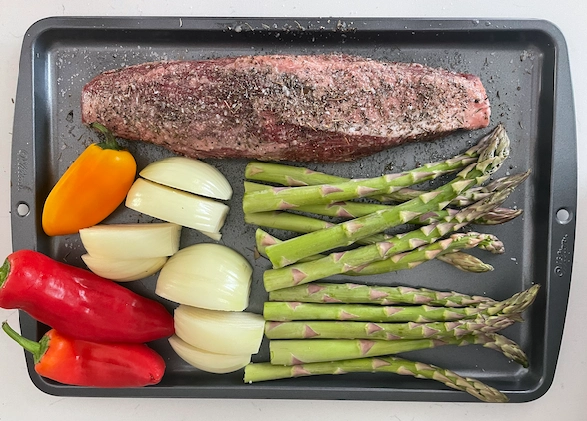Cycle Syncing: Harness the Power of Your Hormones to Feel Your Best

Ever feel like your energy levels are up and down like a rollercoaster? Some days you could conquer the world. While others, even making breakfast feels like a challenge? Well, get ready. I've got something that could change the game for you: cycle syncing.
What is Cycle Syncing?
Cycle syncing is all about aligning your daily routine with the natural hormonal changes of your menstrual cycle. From workouts and meals to work and social plans. It's like biohacking your own body!
By understanding the phases of your cycle, you can work with your body, rather than against it, to feel your best all month long.
Estrogen & Progesterone
Let's meet the stars of the show, the hormones that rise and fall throughout our cycle:
Estrogen: The Energizer Bunny. Estrogen is your "go-go" fuel. It regulates your menstrual cycle, strengthens your bones, and keeps your mood stable. When estrogen levels peak, you might feel unstoppable.
Progesterone: The Tranquilizer. Progesterone is estrogen's chill friend. It focuses on preparing the uterus for a potential pregnancy. It kicks in after ovulation, sometimes leading to bloating and mood swings. Next time you feel like curling up with a good book instead of hitting the gym, you can thank progesterone for its calming influence.
Why Cycle Syncing Matters
Here's the thing: our bodies are amazing, intricate machines. Cycle syncing helps understand the "why" behind our ever-shifting energy, moods, and cravings. Knowing what phase you’re in provides a guide on how to feel your best.
Imagine scheduling a HIIT workout when your body craves rest. Or forcing down a salad when your body is screaming for warm, nourishing carbs. Cycle syncing helps us honor these natural rhythms. With this, we can make choices that truly support the body.
The Four Phases of Your Cycle
Menstruation - your period.
Follicular - follicles on the ovaries (eggs in little sacs) grow to prepare for ovulation.
Ovulation - the "fertile" window. An ovary releases an egg so it can be fertilized by sperm.
Luteal - the uterus thickens and grows blood vessels that it would use to protect an embryo.
Phase 1: Menstruation (Day 1-5)
Hormonal Shift: Estrogen and progesterone levels are at their lowest.
What's Happening: Your uterine lining sheds, causing bleeding.
How You Might Feel: Low energy levels, brain fog, and emotional fluctuations. You might also crave comfort foods.
Cycle Syncing Workouts For the Menstrual Phase
Gentle yoga, restorative postures, or a calming walk are perfect during your period. Focus on resting and listening to your body's need for self-care.
Cycle Syncing Foods For Menstruation
Iron-rich foods to replenish iron lost from bleeding. Lentils, lean red meat, green leafy vegetables, organ meat, and pumpkin seeds.
Complex carbs and lean proteins can help with energy levels. Chicken, fish, rice and quinoa.
Vitamin C helps your body absorb iron. Berries, bell peppers, brussels sprouts, broccoli, citrus and tomatoes.
Vitamin K may reduce heavy bleeding. Leafy greens, blueberries, cheese and eggs
Omega-3 fatty acids can reduce inflammation and cramping. Wild-caught fish, flaxseed and tree nuts.
Phase 2: Follicular Phase (Day 6-14)
Hormonal Shift: Estrogen starts to rise, stimulating egg follicle growth in your ovaries.
What's Happening: Increased energy levels, improved mood, sharper focus.
How You Might Feel: Social, creative, and motivated. This is a great time to brainstorm, tackle projects and check off to-do lists.
Cycle Syncing Workouts For the Follicular Phase
Push yourself with higher-intensity workouts like HIIT, strength training, cardio and circuit training.
Cycle Syncing Foods For the Follicular Phase
Protein to fuel your energy. Estrogen helps build and repear tissues, so protein is key. Meats, fish, eggs or and plant-based protein.
Complex carbs for sustained energy. Rice, quinoa, sourdough, plenty of fruits and vegetables.
Healthy fats for the brain and mood regulation. Avocados, nuts and seeds, and olive oil.
Cruciferous veggies for estrogen balance. Broccoli, cauliflower and Brussels sprouts can help support healthy estrogen metabolism.
Calcium to strengthen the bones. Estrogen is important for bone health. Dairy, leafy greens, and fruits like oranges and papaya.
Phase 3: Ovulation (Day 14-16)
Hormonal Shift: Estrogen peaks, triggering ovulation (the release of the egg). Progesterone also starts to rise.
What's Happening: Your body is primed for conception.
How You Might Feel: More sex drive, cervical mucus and a slight rise in basal body temperature.
Cycle Syncing Workouts For Ovulation
Maintain a moderate exercise routine. Focus on flexibility and core strength with Pilates, dancing, plyometrics and cardio.
Cycle Syncing Foods For Ovulation
Healthy fats for hormone balance. Avocados, nuts, olive oil, grass-fed butter and ghee.
Zinc for healthy egg development. Oysters, pumpkin seeds, chickpeas and lean red meat.
Antioxidants to protect your eggs from free radical damage. Blueberries, raspberries, all the berries.
Fiber for balanced blood sugar. Fruits, veggies and whole grains.
Hydration to support all the body's functions, including ovulation.
Phase 4: Luteal Phase (Day 17-28)
Hormonal Shift: Progesterone levels rise significantly, preparing the uterine lining for potential implantation.
What's Happening: Your body temperature may increase. You might experience PMS symptoms like bloating, mood swings and breast tenderness.
How You Might Feel: More introverted, tired, and craving comfort foods again.
Cycle Syncing Workouts in Luteal Phase
Gentle, low impact exercise like yoga, swimming, or walking is ideal. Choose activities that promote relaxation and stress relief.
Cycle Syncing Foods in Luteal Phase
Complex carbs that promote serotonin and elevate your mood. Sourdough, rice, and quinoa.
Fiber for digestion and bloating relief. Progesterone can slow down digestion, which can cause bloating. Fruits, veggies and whole grains.
Magnesium for relaxation and better sleep. Dark chocolate, leafy greens, nuts, seeds and avocados.
Calming herbs to ease anxiety. Chamomile or lavender infused teas.
Vitamin B6 to regulate mood swings. Bananas, potatoes, chickpeas and salmon.
*A typical menstrual cycle is around 28 days long, but can last from 21 to 35 days and still be normal. The information above is based on a 28 day cycle.
**This content is for informational purposes only and is not medical advice.






